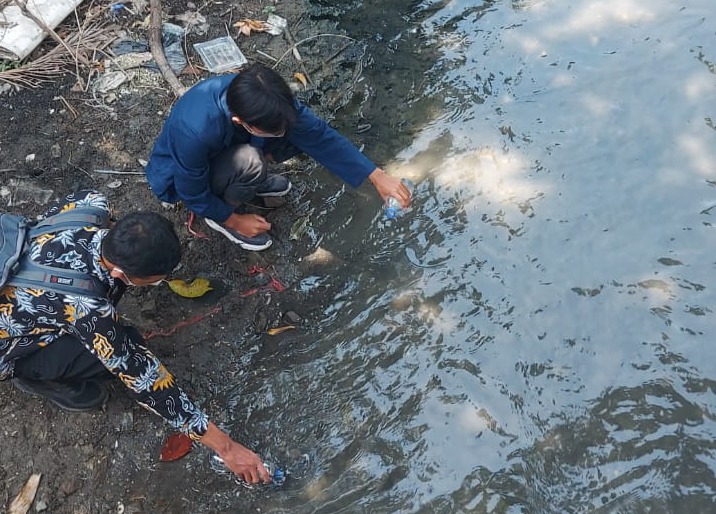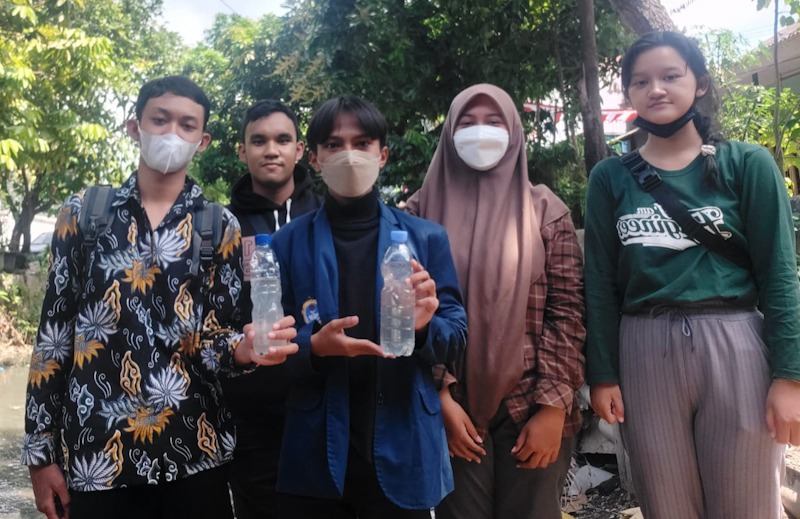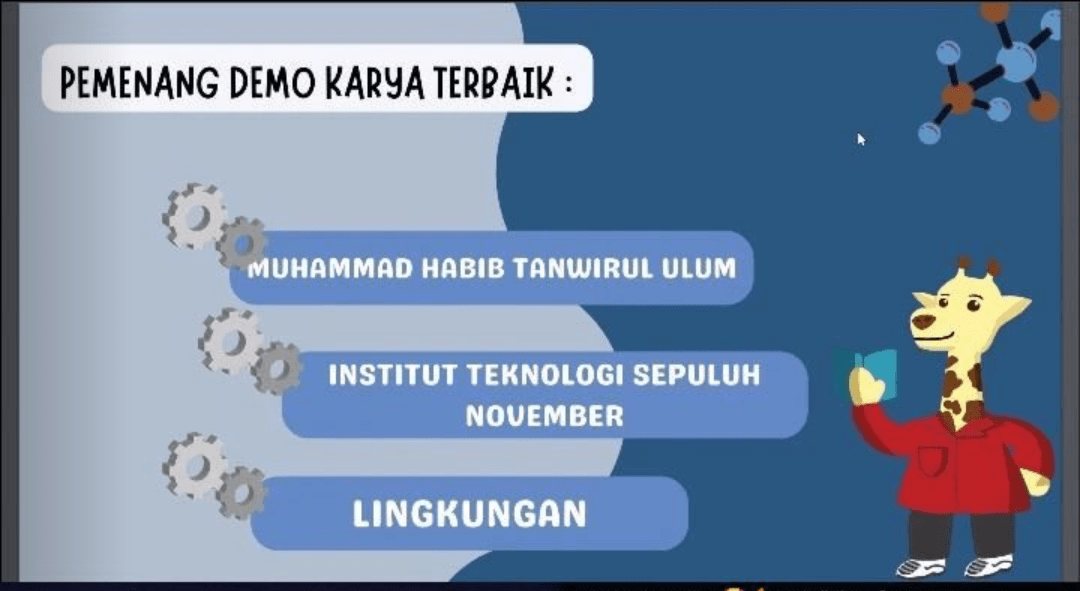ITS Students Use Rice Husk to Control River Pollution

The process of taking Kalimas river water samples by Muhammad Habib Tanwirul Ulum with members of his team
ITS Campus News –Decreasing the quality of river water polluted by chromium (VI) metal can harm the surrounding environment. This is the background for a group of students from the Sepuluh Nopember Institute of Technology (ITS) to come up with the idea of using rice husks as an effort to control water pollution in the Kalimas river.
Muhammad Habib Tanwirul Ulum as the team leader stated that the Kalimas river has a chromium (VI) content that exceeds the maximum threshold. Yet according to the student who is usually called Habib, the maximum level of chromium (VI) content in water that is allowed according to government regulations is 0.05 milligrams per liter. “Chromium (VI) metal is very dangerous if it enters the body because it can cause cancer,” said the young man who was born on August 21, 2004.
This is what ultimately prompted Habib and his team to conduct research related to the purification of Kalimas river water. The Kalimas River was also chosen because it is a source of life for the local community as well as one of the icons of the city of Surabaya. After conducting a literature study on previous research, the ITS team decided to use dried rice husks and then mixed with hydrochloric acid and sodium hydroxide to purify water.
This student of the Department of Chemical Engineering said that rice husk was chosen because it has a high cellulose content, which is 35 percent. This content, according to him, is needed to adsorb chromium (VI) so that it is not toxic. “To be able to bind chromium (VI) metal, rice husk must be activated first,” he explained.

Muhammad Habib Tanwirul Ulum (wearing his alma mater jacket) and the team showing the Kalimas river water sample that he took
He explained, the activation process aims to remove lignin compounds in rice husks that inhibit the absorption process. This is because, added Habib, lignin compounds have a large structure so that they can cover the cellulose and interfere with the reaction process.
According to Habib, previous studies using charcoal rice husks were found to be less effective. This is because the cellulose content in rice husks can also be lost due to the combustion process. Therefore, Habib and team used another way to activate the cellulose content without changing its composition.
Together with four other team members, namely Andhika Fathurrohman, Anugerah Pratama Manurung, Brilliana Ayu Putri Herlisya, and Post-Purwaning Dyah Ayu, the team examined several points where the Kalimas river flows. The samples taken in river streams in the Ngagel, Keputran, Ketabang, and Bubutan areas aim to determine how far chromium (VI) metal contaminates the Kalimas river flow.
Announcement of the winner of the best work by Muhammad Habib Tanwirul Ulum and the team in the 2022 Bio Energy Competition Furthermore, this alumnus of MAN 2 Lamongan said that his research could not yet be implemented on a large scale. However, he hopes that this can continue to be developed. “People don’t need to use chemicals to remove chromium (VI) content in water because there is rice husk which is natural and easy to get,” he said.
The innovations carried out by Habib and the team have won the best work award in the Energy Competition held by Universitas Pembangunan Negara (UPN) East Java in early October. “As students, we want to contribute to the environment by making innovations that benefit many people,” he said. (ITS PR)
Related News
-
ITS Rises to Second Rank in Most National PKM Funding
ITS Campus, ITS News – Strengthening its determination in the scientific field, the Institut Teknologi Sepuluh Nopember (ITS) succeeded
December 25, 2022 12:12 -
Examining Kenny, the Best ITS Bachelor Graduate with a GPA of 3.94
ITS Campus, ITS News — Educating for 3.5 years at the Institut Teknologi Sepuluh Nopember (ITS) did not prevent Benedictus
December 25, 2022 12:12 -
Inspirational, Deaf ITS Graduates Graduated with Cumlaude Predicate
ITS Campus, ITS News — An inspiring story was also present at the 129th Graduation Ceremony of the Institut Teknologi
December 25, 2022 12:12 -
129th Graduation: ITS Graduates 1,355 Candidate Leaders
ITS Campus, ITS News – Institut Teknologi Sepuluh Nopember (ITS) again held a graduation procession for its students through the
December 25, 2022 12:12

